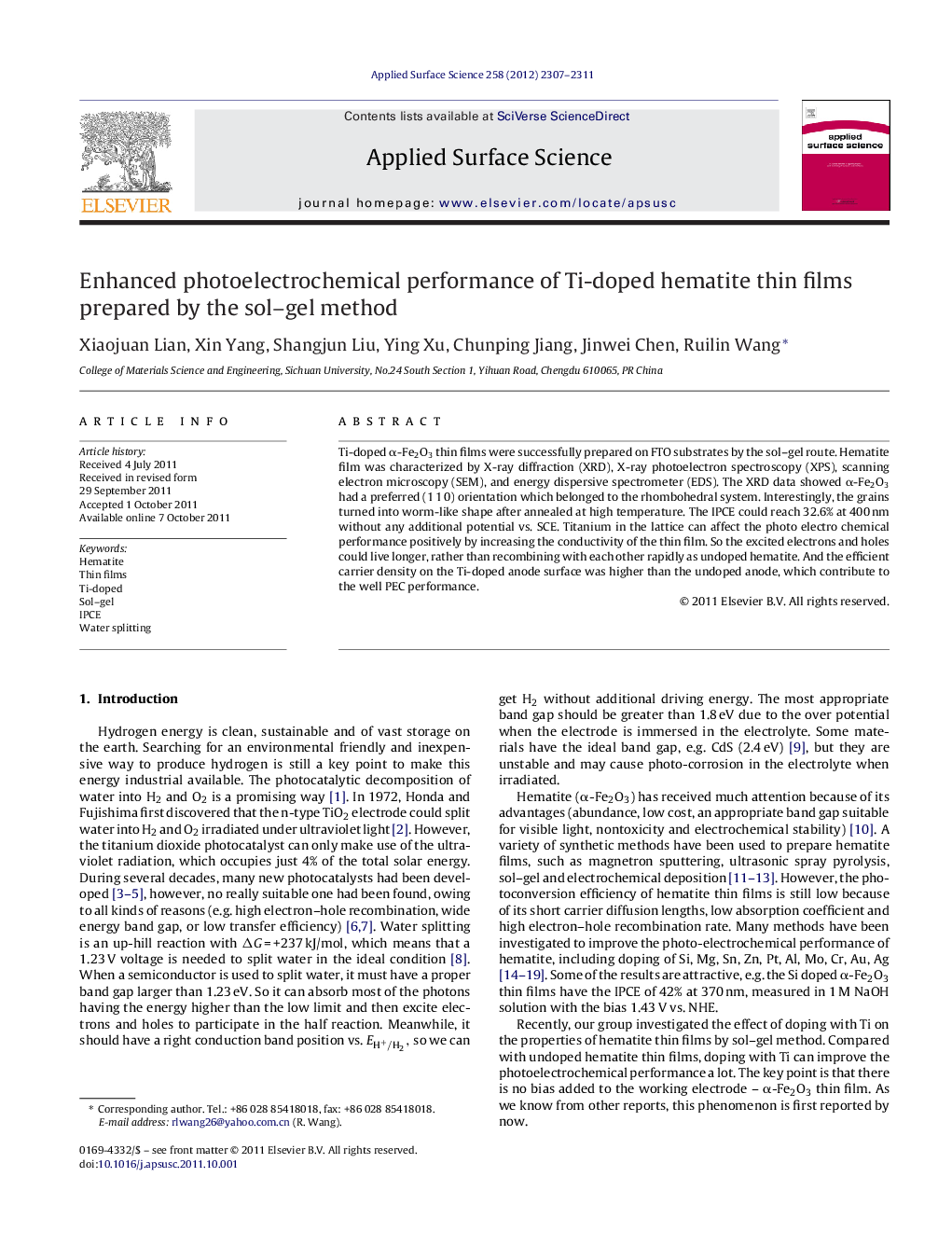| Article ID | Journal | Published Year | Pages | File Type |
|---|---|---|---|---|
| 5366470 | Applied Surface Science | 2012 | 5 Pages |
Ti-doped α-Fe2O3 thin films were successfully prepared on FTO substrates by the sol-gel route. Hematite film was characterized by X-ray diffraction (XRD), X-ray photoelectron spectroscopy (XPS), scanning electron microscopy (SEM), and energy dispersive spectrometer (EDS). The XRD data showed α-Fe2O3 had a preferred (1 1 0) orientation which belonged to the rhombohedral system. Interestingly, the grains turned into worm-like shape after annealed at high temperature. The IPCE could reach 32.6% at 400 nm without any additional potential vs. SCE. Titanium in the lattice can affect the photo electro chemical performance positively by increasing the conductivity of the thin film. So the excited electrons and holes could live longer, rather than recombining with each other rapidly as undoped hematite. And the efficient carrier density on the Ti-doped anode surface was higher than the undoped anode, which contribute to the well PEC performance.
⺠We synthesize pure and Ti-doped hematite films by the sol-gel route. ⺠Worm-like nano particles are prepared. ⺠The IPCE increases to 32.6% without any bias vs. SCE at 400 nm. ⺠Ti4+ ions promote the separation of electrons and holes.
